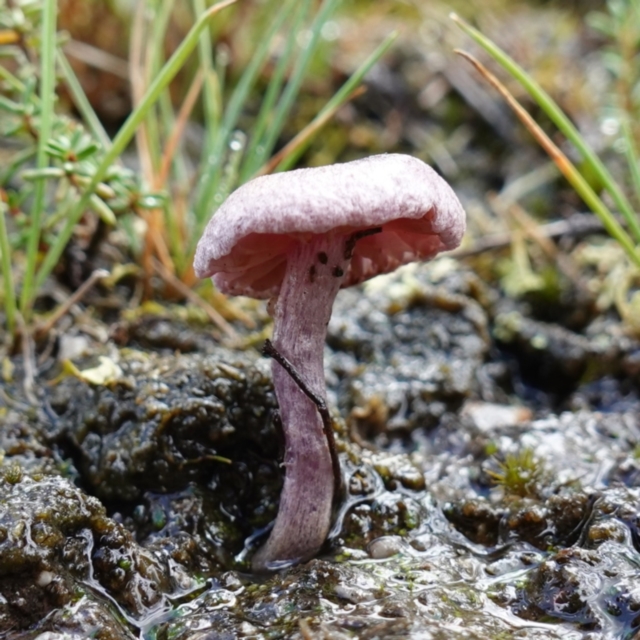Inocybe violaceocaulis
The fruitbody is a mushroom, with a cap atop a central stem. The diameters of mature caps range from 1.5 to 3.5 centimetres. The caps are dry and are conical at first but flatten with age, though still with a central hump. The caps are initially violet but become brown with age. The gills are violet but become tinged with brown as the spores mature. The stem is smooth, dry, violet (and keeps that colour) and may be up to 4 centimetres long and 5 millimetres in diameter.
Spore print: brown.
A cobwebby partial veil is present in the unexpanded mushroom, but traces may be hard to find when the mushroom is mature.
The first published description of this native species appeared in 2005 and was based on specimens collected in Western Australia. Since then it has been found in SA, Victoria, Tasmania, NSW, ACT and SE Queensland in a variety of landscaped or natural habitats, in association with native trees.
Look-alikes
The violet cap that becomes brown, the stem that remains violet and the brown spores tend to make this species fairly easy to recognize.
However, at first glance it might be mistaken for an Entoloma or a Cortinarius. Species of the former genus produce small, colourful mushrooms (with pinkish spore-prints and no partial veil) and in Cortinarius you find brown-spores, cobwebby partial veils and several species that produce mushrooms in violet shades. The violet Cortinarius species have larger caps and chunkier stems.
Inocybe violaceocaulis is listed in the following regions:
Species information
- Inocybe violaceocaulis Scientific name
- Common name
- Not Sensitive
- Local native
- Non-Invasive
- Machine learning
Follow Inocybe violaceocaulis
Receive alerts of new sightings
Subscribe








